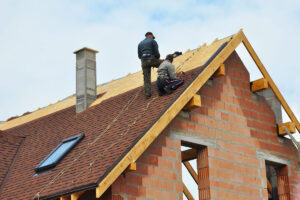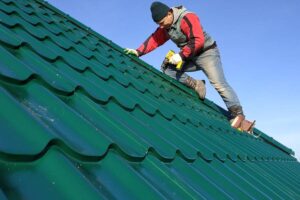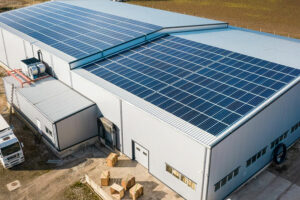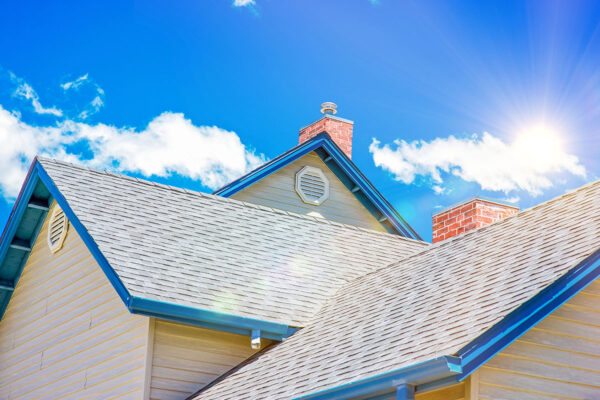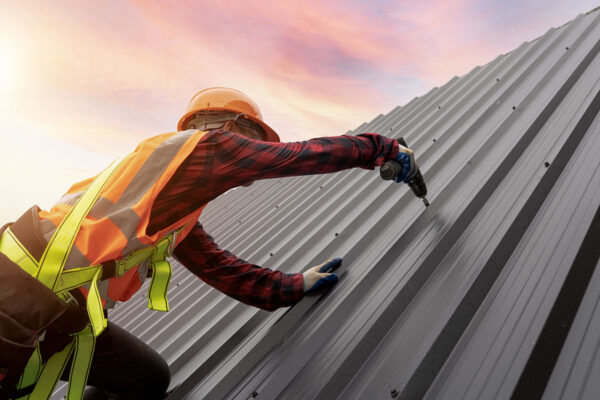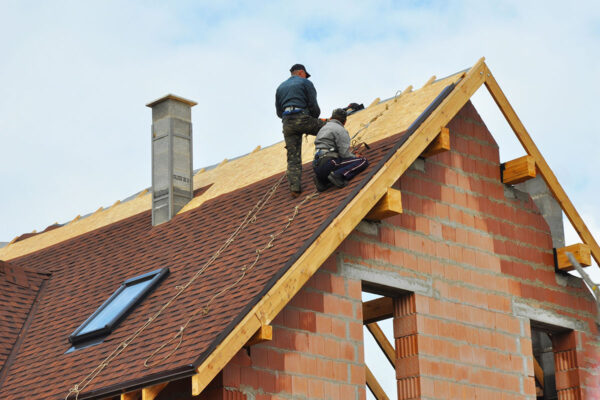When it comes to our homes, one of the most crucial components that often goes unnoticed is the roof. Yet, understanding the various layers that make up a roof is essential for any homeowner or building professional.
From providing protection against harsh weather conditions to adding energy efficiency and aesthetics, every layer plays an integral role in safeguarding our dwellings.
We’ll look into the intricate details of your roof by unraveling each layer’s purpose and significance, gaining insight into these different layers and make more informed decisions about its maintenance, repair, or even replacement when required.
So, let’s dive in and explore all the fascinating elements that come together to create a resilient and durable shelter above our heads!
The Roofing System Anatomy
The roofing system is a complex structure that consists of various layers, each serving a specific purpose in providing protection and durability. The first layer, known as the roof deck or sheathing, forms the foundation of the entire system. It is typically made of plywood or oriented strand board (OSB) and provides support for all other layers.
On top of the roof deck lies an underlayment, which acts as a secondary barrier against water penetration. This layer is usually made from felt paper or synthetic materials like asphaltic membranes. Its primary function is to protect the roofing components during installation and provide temporary waterproofing until shingles are installed.
Next comes the most visible part of any roof- the shingle layer. Shingles can be made from materials such as asphalt, wood shakes, metal sheets, or tile-like materials. They not only enhance aesthetics but also provide protection against rainwater while withstanding harsh weather conditions.
Understanding these different layers allows homeowners and building professionals to appreciate how each component contributes to their home’s overall safety and functionality. By knowing this anatomy of a roofing system, one can make informed decisions when it comes to maintenance and repairs while ensuring optimal performance for years to come.
Roof Deck and Underlayment
Roof deck and underlayment are two important layers that make up the structure of a roof. The roof deck, also known as the sheathing or decking, is the foundation upon which all other roofing materials rest. Typically made from plywood or OSB, the roof deck provides structural support to the entire roof system. It distributes the weight of the roofing materials evenly across the rafters or trusses and helps to anchor them securely to the building.
Underlayment, on the other hand, is a secondary layer installed directly on top of the roof deck but beneath the final roofing material. It serves as a protective barrier against water intrusion and helps to create a thermal seal for better energy efficiency.
Underlayment can be made from various materials such as asphalt-saturated felt, rubberized asphalt, or synthetic products like polyethylene films. Its primary function is to provide an additional layer of waterproofing, preventing any leaks in case there are issues with the outermost roofing material.
Both roof deck and underlayment are critical components of a well-functioning roof system. The proper installation and maintenance of these layers ensure that your home remains protected from moisture penetration and other external elements while providing strength and stability to your overall structure.
Roofing Materials and Shingles
Roofing materials and shingles are key components in protecting our homes from the elements. There are various types of roofing materials available, including asphalt shingles, metal roofing, wood shakes, and tile roofs. Each material has its own advantages and disadvantages in terms of durability, cost-effectiveness, aesthetics, and environmental impact.
One of the most common roofing materials is asphalt shingles. These shingles are affordable, easy to install, and come in a wide range of colors and styles.
They provide excellent protection against wind damage and fire resistance. However, they may not be as durable as other options such as metal or tile roofs.
Metal roofing is becoming increasingly popular due to its longevity and energy efficiency. Metal roofs can last up to 50 years or more with proper maintenance. They reflect sunlight instead of absorbing it like asphalt shingles do, making them more energy efficient during hot summer months.
Wood shakes offer a natural look that many homeowners find desirable for their homes’ exteriors. They provide good insulation properties but require regular maintenance to prevent rotting or splitting over time.
Tile roofs offer an elegant aesthetic appeal with their clay or concrete tiles that come in various shapes and colors. Tile roofs are known for their longevity; they can last up to 100 years when properly maintained.
Flashing and Ventilation
Flashing plays a vital role in maintaining the integrity of a roof. It consists of thin, weather-resistant materials such as sheet metal or rubber that are installed to prevent water from seeping into vulnerable areas where different parts of the roof meet.
Flashing is commonly found around chimneys, skylights, vents, and any other protrusions on the roof. Its purpose is to create a watertight seal and protect against leaks by directing water away from these junctions.
Ventilation is another crucial aspect of roofing that often goes unnoticed but contributes greatly to the overall health and longevity of a building. Proper ventilation allows for air circulation within the attic space, preventing moisture buildup, reducing heat transfer between the attic and living spaces below, and improving energy efficiency.
It also helps extend the lifespan of roofing materials by minimizing excessive heat or cold exposure which can cause damage over time. Ventilation systems typically involve intake vents located at soffits or eaves and exhaust vents positioned near ridges or peaks to allow hot air to escape.
Both flashing and ventilation play integral roles in keeping our roofs sturdy and durable while protecting our homes from potential damage caused by weather elements like rainwater infiltration or extreme temperatures.
Homeowners should pay attention to these essential components when considering roof maintenance or installation projects as they are key factors in ensuring both long-term performance and comfort within their dwellings.
The Role of Gutters and Downspouts
Gutters and downspouts are an essential part of a roofing system and play a crucial role in the overall protection of a home or building.
Gutters are troughs that are installed along the edges of a roof to collect rainwater and direct it away from the structure, while downspouts are vertical pipes that carry this water down to the ground.
The main purpose of gutters and downspouts is to prevent water damage by channeling rainwater away from the foundation of a building. Without these components, rainwater would run off the edge of the roof, leading to soil erosion around the foundation and potential damage to walls, windows, and basements.
Gutters and downspouts also help protect against other issues such as mold growth, rotting wood, and landscape erosion. By properly directing water away from your home or building, they ensure that excess moisture doesn’t accumulate in vulnerable areas.
Regular maintenance and cleaning should be performed to ensure their optimal functionality throughout all seasons.
A Layered Approach to a Strong Roof
Each layer in a roof system has its own unique purpose and significance, contributing to the overall functionality and longevity of the structure.
Starting from the bottom layers such as decking or sheathing, these provide a sturdy base for the rest of the roof components. They act as a support structure while also helping to distribute weight evenly across the framework.
The underlayment layer serves as an additional barrier against moisture infiltration and offers added protection in case any water makes its way past shingles or other outer layers. It plays a vital role in preventing leaks and ensuring that water does not penetrate into the interior spaces of our homes.
Lastly, we have the outermost layer consisting of shingles or other roofing material options. This is what gives character and aesthetics to your home’s exterior while also providing protection against harsh weather elements such as rain, snow, wind, and UV rays.
By understanding each layer’s purpose within a roofing system, homeowners are better equipped to make informed decisions when it comes to repairs or replacements. Taking into consideration factors like climate conditions, budget constraints, and desired appearance can help ensure that every layer contributes effectively towards maintaining a strong and long-lasting roof for your home.
Seguin Roofing Contractors Here To Help
Understanding the various layers that make up your roof is essential to maintaining its longevity and functionality. From the underlayment to the shingles, each component plays a crucial role in protecting your home from the elements.
At Divided Sky Roofing & Solar, we specialize in providing top-notch Seguin roof repair services. If you’re in need of expert assistance with your roofing in Seguin TX, don’t hesitate to contact us today.
Our team of skilled professionals is ready to provide you with the best solutions for all your roofing needs. Protect your investment and ensure your roof stands strong for years to come. Reach out to Divided Sky now for exceptional service you can trust.





